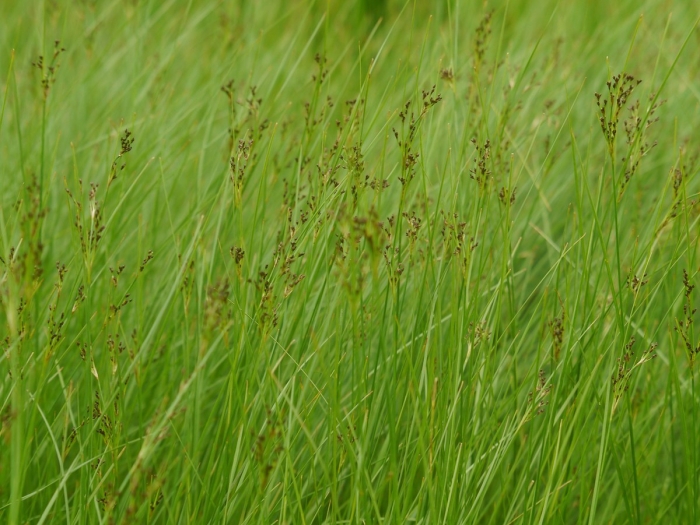Saltmeadow Rush
(Juncus gerardii)
Saltmeadow Rush (Juncus gerardii)
/
/

Roman
CC BY 4.0
Image By:
Roman
Recorded By:
Copyright:
CC BY 4.0
Copyright Notice:
Photo by: Roman | License Type: CC BY 4.0 | License URL: http://creativecommons.org/licenses/by/4.0/ | Rights Holder: Roman | Publisher: iNaturalist | Date Created: 2021-05-16T19:19Z |






















Estimated Native Range
Summary
Juncus gerardii, commonly known as Saltmeadow Rush, is a grass-like perennial herb native to salt marshes, coastal dunes, and brackish wetlands in North America, Europe, and Asia. It typically grows to a height of 1-2 feet (0.3-0.6 meters) and can spread to about 3 feet (0.9 meters) wide. This rush has a clumping habit with upright cylindrical stems and small, inconspicuous brown flowers that appear in summer. The plant’s ability to tolerate salt spray and occasional flooding makes it an important stabilizer of coastal ecosystems.
Saltmeadow Rush is valued for its adaptability to wet and saline conditions, making it suitable for water gardens, rain gardens, and restoration projects in coastal areas. It is often used to mitigate erosion and provide habitat for wildlife. In cultivation, it thrives in full sun to part shade and prefers consistently moist to wet soils with poor to moderate drainage. While it is not known for showy flowers, its upright form and fine-textured foliage add a unique aesthetic to plantings. Juncus gerardii is generally low-maintenance, but it can spread aggressively in ideal conditions, so care should be taken to manage its growth in smaller garden settings.CC BY-SA 4.0
Saltmeadow Rush is valued for its adaptability to wet and saline conditions, making it suitable for water gardens, rain gardens, and restoration projects in coastal areas. It is often used to mitigate erosion and provide habitat for wildlife. In cultivation, it thrives in full sun to part shade and prefers consistently moist to wet soils with poor to moderate drainage. While it is not known for showy flowers, its upright form and fine-textured foliage add a unique aesthetic to plantings. Juncus gerardii is generally low-maintenance, but it can spread aggressively in ideal conditions, so care should be taken to manage its growth in smaller garden settings.CC BY-SA 4.0
Plant Description
- Plant Type: Grass
- Height: 1-2 feet
- Width: 2-3 feet
- Growth Rate: Moderate
- Flower Color: N/A
- Flowering Season: Spring, Summer
- Leaf Retention: Evergreen
Growth Requirements
- Sun: Full Sun
- Water: High
- Drainage: Slow
Common Uses
Bird Garden, Deer Resistant, Erosion Control, Low Maintenance
Natural Habitat
Salt marshes, coastal dunes, and brackish wetlands
Other Names
Common Names: Saltmeadow Rush, Black-Grass, Gerald’s Rush, Black Needle Rush, Blackgrass, Blackgrass Rush, Mud Rush, Brwynen Gerard, Harril, Bodden-Binse
Scientific Names: , Juncus gerardii, Juncus bulbosus subsp. gerardi, Juncus compressus subsp. gerardii, Juncus compressus var. gerardii, Juncus floridanus, Juncus gerardii subsp. microcarpus,
GBIF Accepted Name: Juncus gerardii Loisel.